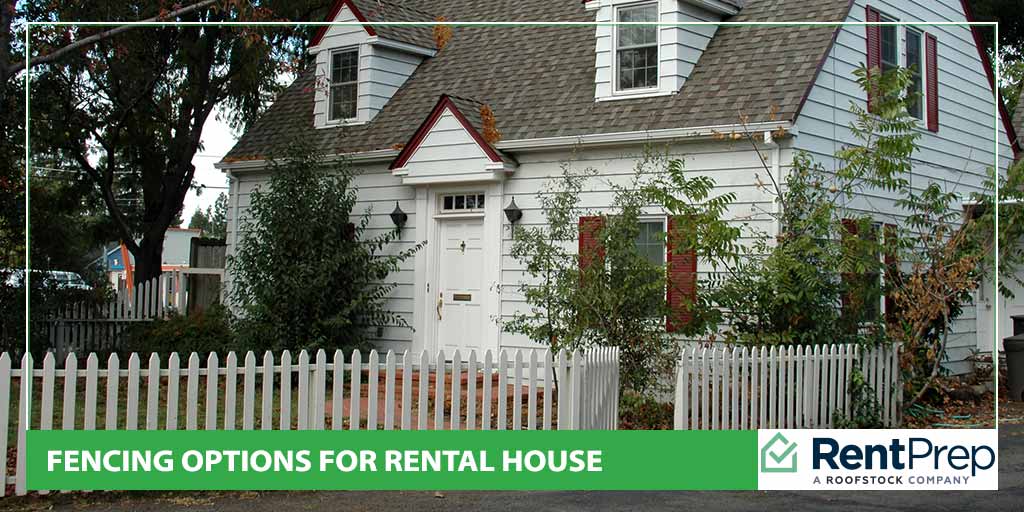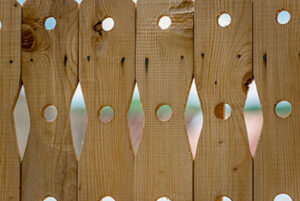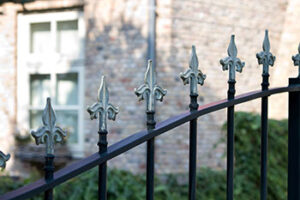
Fences can do a lot of things for a property—provide security, boost curb appeal, or keep pets and children close to home. Landlords who purchase property that is not fenced may want to consider adding one to enhance that amenities list for their rental property, as well as raise property values. However, choosing the right size, style and material from all the different kinds of fencing options isn’t an easy task for landlord without doing a lot of research first.
What Kind of Property Needs Fencing?
Landlords must deal with fencing decisions at some point, whether it’s with a single family rental property or a multi-unit property. Single family properties are often fenced, both for privacy from close suburban neighbors and to keep the occupants safe and secure, especially children and dogs. These types of properties may also be regulated by HOAs as to what type, style or height, or even whether or not a fence can be put in at all.
Multi-unit properties are also often fenced, mostly to mark the entire property, prevent non-residents from entering via non-designated entry points and to eliminate inter-block short cuts. Landlords may even have to consider fencing around community amenities like playgrounds, pools and courtyards. No matter what the situation, landlords will benefit if they do their research onto the reasons they need a fence for their rental property.
Before installing any kind of fence, landlords need to ask themselves why they are installing one in the first place. Is it to provide a safe place for children and pets to play? Is it to add privacy to a yard on a busy street? Is it to increase property value and improve the look of the property? No matter what the motive, putting the reasons into words will help landlords zero in on the right kind of fence for their needs. Let’s take a look at some of the some pros and cons of all the different types of residential fencing.
Temporary Fence for Rental House
If you suddenly have a need for a temporary fence for a rental house you’ll want to get something cheap that won’t break the bank.
Amazon has plenty of options you can purchase for your needs (the images below are affiliate links to each product).
You may have a need for temporary fence for a rental house due to town codes, fall leaves becoming a problem for the neighbor, or perhaps you’ve granted your tenant permission to have a pet.
Just make sure whatever you purchase is sturdy enough for the job at hand without going too high on price.
Wooden Fences

Wood has been a favorite fencing material for generations, and the quintessential “white picket fence” has long symbolized the comfort and security of the American home. Today, wood is still a favorite for many, because it is inexpensive and attractive. Wooden slat fences are perfect for privacy and are a moderately inexpensive fencing option. Picket fence style still provides protection without visually blocking everything out. The most common wood used is redwood, cedar and pine, and are quite rot resistant. Most wood fences are either 4 feet tall or 6 feet tall, and may be subject to municipal regulations for height. Color options are endless, thanks to varieties of stain and paint.
When exposed to the elements without a protective stain, however, the wood can turn gray or brown. That’s why wood fencing requires the most maintenance because of its potential for warping or rotting after too long in the elements. Staining should be done every 3 or 4 years to keep wood from discoloring and getting too weathered. The maintenance required for wood fencing is definitely higher than other fencing options, but the low up-front cost and classic look makes wood fences quite popular.
Chain Link Fences
The chain link fence is pretty typical for suburban homes built in the modern era. Chain link is a cost-effective and durable fencing choice which translates into a lot of benefits for property owners. This type of fencing is very durable and because it is quite flexible, it can withstand all kinds of pressure. However, many people don’t like the look, feeling like it looks too utilitarian or cheap. Overall, chain link fencing doesn’t provide as much privacy as some of the other fencing options but when combined with thoughtful landscaping or privacy slats, it can be a viable option for landlords. It covers just about any type of terrain as well, from flat to sloped properties.
Chain link fencing doesn’t need much maintenance, either, and it is pretty difficult to ruin. It may rust unless it is coated with vinyl, but more modern varieties incorporate anti-rust elements. Because it is able to withstand the elements for the most part and doesn’t require any staining or painting, chain link is a popular choice for landlords wanting a low maintenance, affordable option.
Wrought Iron Fences

On the more expensive end of the metal fence spectrum is wrought iron fencing. Renown for beauty and strength, wrought iron comes in many decorative designs that can be customized for a one-of-a-kind look. The wrought iron fence is definitely the strongest fencing option, and simultaneously provides a classic and elegant look, especially to more historic homes and properties. Wrought iron is a traditional, heavy fence that is perfect for property owners who are concerned with security as well as durability.
This type of metal fence requires minimal maintenance. Wrought iron fences are galvanized for rust resistance as well as treated with a powder coat finish to prevent UV fading. Iron pieces are welded into place and often come with a multi-decade warranty. As the strongest type of fence available, iron definitely ought to be considered.
Aluminum Fences
Mimicking the look of wrought iron without the price or the weight, aluminum fences are a fine alternative for property owners that want the upscale look of iron but don’t have the budget to do so. While aluminum fencing costs more than wood, it is an affordable mid-range option for property owners. Both strong and beautiful, aluminum fencing encloses an area without compromising a property owner’s view. The dark aluminum fencing blends in with the landscaping, rather than standing out in stark contrast like wood or vinyl fencing does. Another benefit of decorative metal fencing is that they can be installed on just about any type of land, no matter what the grade.
Aluminum fencing is virtually maintenance free as well, and the powder coating prevents rust and fading from UV rays. Because aluminum fencing doesn’t need painted or stained, property owners can get it and forget it.
Vinyl Fences
Capturing the ultimate in modern looks, vinyl fencing is sleek, durable and in high demand nowadays. With a range of textures, styles, colors and heights, vinyl fencing is the most diverse of the fencing options. Among the more popular options are the 6-foot privacy style and the 4-foot picket fence style.
There is virtually no care involved with vinyl fencing as it doesn’t need stained or painted, and it won’t rot. This type of fencing material doesn’t blister, warp or rot. Vinyl fencing is more expensive than most other fencing options but the convenience and longevity make it worth it for many property owners.
Brick and Stone Fences
Brick or stone fences set in concrete are not as popular as they once were, thanks to affordable modern options, but they can still provide plenty of advantages to property owners. Strong and long-lasting, brick and stone fences come in a range of colors, textures and styles. The design possibilities are endless, and they can match the look of the house or multi-unit building almost perfectly. Brick and stone fences are very secure, especially when they are constructed at or above 6 feet. Sometimes, brick and stone walls are topped with metal to create an extra secure perimeter. Brick and stone are often combined with metal fencing for both decorative and security benefits.
However, brick and stone fencing is one of the most expensive options on the market, and they don’t do as well on uneven ground. Brick and stone walls are great for privacy, but may not be for the property owner who wants to take advantage of a view or seeks a more open fencing option.
Maintenance for brick or stone fencing is minimal, and usually a crack or chip is the worst that will happen. No painting, staining or repairs are generally needed for brick or stone fencing, and once constructed, these kinds of fences can last a lifetime.
Choosing the Right Fencing
There’s no right answer for landlords as they start the process of choosing a fence material for their rental property. Landlords need to consider all kinds of factors in their fencing decision, such as budget, property terrain, tenant use, what the neighborhood is like, whether municipal or HOA rules apply and what kind of maintenance is needed. They also need to consider their ideal tenants, and what kind of fence will attract the right kind of applicant.
Ultimately, landlords who take the time to research and evaluate all the different options will soon see that one type of fencing is the right choice for their rental property. It’s an investment that will have benefits for many years to come, so landlords are making the right choice in fencing their property, regardless of what they choose.
Peerless Fence

